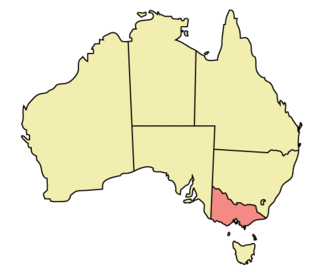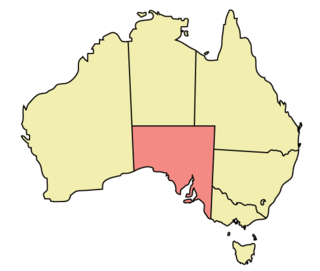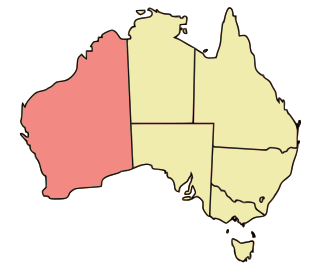Provisions
The full scope of the Act is covered principally by Section 3B, [3] which seeks "to eliminate, so far as is possible, discrimination against persons on the ground of sex, marital status, pregnancy or potential pregnancy in the areas of work, accommodation, education, the provision of goods, facilities and services, the disposal of land, the activities of clubs and the administration of Commonwealth laws and programs". This may include provision of public services, dismissal of employees with family responsibilities and to eliminate sexual harassment in areas of public activity. However, it equally applies to sex based discrimination on topics such as domestic violence, where there is no justification for sex differentiation for victims of violence. [4]
The Act also seeks to create recognition and acceptance within the community of the principle of the equality of men and women.
Section 7AA of the Act prohibits discrimination against a woman on account of her breastfeeding. [5]
Section 38 of the Act [6] permits educational institutions established for religious purposes to discriminate, including against teachers and students, due to their sexuality or gender. [7] [8]
Outcomes
As a result of the Act, the Women's Royal Australian Naval Service was integrated in 1985 into the Royal Australian Navy. [9] Other restrictions on women in the WRANS had been eliminated previously: the restriction on married women serving was removed in 1969, and the automatic discharge of pregnant women had been dropped in 1974.
In 1991, the Sex Discrimination Amendment Act 1991 amended the Marriage Act 1961 to equalise the marriageable age of both males and females at 18 years, subject to "exceptional circumstances". [11] Previously the marriageable age was set at 16 for females and 18 for males.
The rights and responsibilities of pregnant and potentially pregnant workers in the workplace were clarified by the Sex Discrimination Amendment (Pregnancy and Work) Act 2003. The foundational case on this issue is Hickie v Hunt & Hunt (1998) [12] [13] in which the plaintiff complained of less favourable treatment in the workplace following her maternity leave.
Section 43 of the Act provided the Australian Defence Force (ADF) with an exemption to allow discrimination against women "in connection with employment, engagement or appointment" involving combat duties that required a person "to commit, or to participate directly in the commission of, an act of violence against an adversary in time of war". [Note 1] [16] [17] On 1 January 2014, the ADF lifted restrictions on women serving in all combat roles, including the special forces, and on 1 January 2016 direct entry to all combat roles became open to women. [18] [19] On 26 October 2018, the Civil Law and Justice Legislation Amendment Act 2018 repealed section 43 of the Act. [19] [20]
In 2018, Prime Minister Scott Morrison announced that laws would be created to protect students from expulsion from religious schools due to sexuality or gender, [7] and later also announced a promise to protect teachers and staff. [21] In 2019, a Senate Inquiry into Sex Discrimination Amendment Bill was held. [22] In 2021, religious educational institutions continued to be lawfully permitted to fire or expel LGBTQ+ teachers, students, and staff due to their sexuality or gender. [23]
Equal pay for equal work is the concept of labour rights that individuals in the same workplace be given equal pay. It is most commonly used in the context of sexual discrimination, in relation to the gender pay gap. Equal pay relates to the full range of payments and benefits, including basic pay, non-salary payments, bonuses and allowances. Some countries have moved faster than others in addressing equal pay.

The Australian Human Rights Commission is the national human rights institution of Australia, established in 1986 as the Human Rights and Equal Opportunity Commission (HREOC) and renamed in 2008. It is a statutory body funded by, but operating independently of, the Australian Government. It is responsible for investigating alleged infringements of Australia's anti-discrimination legislation in relation to federal agencies.
Human rights in Australia have largely been developed by the democratically-elected Australian Parliament through laws in specific contexts and safeguarded by such institutions as the independent judiciary and the High Court, which implement common law, the Australian Constitution, and various other laws of Australia and its states and territories. Australia also has an independent statutory human rights body, the Australian Human Rights Commission, which investigates and conciliates complaints, and more generally promotes human rights through education, discussion and reporting.

Anti-discrimination law or non-discrimination law refers to legislation designed to prevent discrimination against particular groups of people; these groups are often referred to as protected groups or protected classes. Anti-discrimination laws vary by jurisdiction with regard to the types of discrimination that are prohibited, and also the groups that are protected by that legislation. Commonly, these types of legislation are designed to prevent discrimination in employment, housing, education, and other areas of social life, such as public accommodations. Anti-discrimination law may include protections for groups based on sex, age, race, ethnicity, nationality, disability, mental illness or ability, sexual orientation, gender, gender identity/expression, sex characteristics, religion, creed, or individual political opinions.
Pregnancy discrimination is a type of employment discrimination that occurs when expectant women are fired, not hired, or otherwise discriminated against due to their pregnancy or intention to become pregnant. Common forms of pregnancy discrimination include not being hired due to visible pregnancy or likelihood of becoming pregnant, being fired after informing an employer of one's pregnancy, being fired after maternity leave, and receiving a pay dock due to pregnancy. Pregnancy discrimination may also take the form of denying reasonable accommodations to workers based on pregnancy, childbirth, and related medical conditions. Pregnancy discrimination has also been examined to have an indirect relationship with the decline of a mother's physical and mental health. Convention on the Elimination of All Forms of Discrimination against Women prohibits dismissal on the grounds of maternity or pregnancy and ensures right to maternity leave or comparable social benefits. The Maternity Protection Convention C 183 proclaims adequate protection for pregnancy as well. Though women have some protection in the United States because of the Pregnancy Discrimination Act of 1978, it has not completely curbed the incidence of pregnancy discrimination. The Equal Rights Amendment could ensure more robust sex equality ensuring that women and men could both work and have children at the same time.

Bliss v Canada (AG) [1979] 1 S.C.R. 183 is a famous Supreme Court of Canada decision on equality rights for women under the Canadian Bill of Rights. The Court held that women were not entitled to benefits denied to them by the Unemployment Insurance Act during a certain period of pregnancy. This case has since become the prime example demonstrating the inadequacies of the Canadian Bill of Rights in upholding and protecting individuals' rights. This ruling was eventually overturned in Brooks v. Canada Safeway Ltd., [1989] 1 SCR 1219.

Lesbian, gay, bisexual, and transgender (LGBT) rights in Australia rank among the highest in the world; having significantly advanced over the latter half of the 20th century and early 21st century. Opinion polls and the Australian Marriage Law Postal Survey indicate widespread popular support for same-sex marriage within the nation. A 2013 Pew Research poll found that 79% of Australians agreed that homosexuality should be accepted by society, making it the fifth-most supportive country surveyed in the world. With its long history of LGBT activism and annual Gay and Lesbian Mardi Gras festival, Sydney has been named one of the most gay-friendly cities in the world.
The ages of consent for sexual activity vary from age 15 to 18 across Australia, New Zealand and other parts of Oceania. The specific activity and the gender of its participants is also addressed by the law. The minimum age is the age at or above which an individual can engage in unfettered sexual relations with another person of minimum age. Close in age exceptions may exist and are noted where applicable. In Vanuatu the homosexual age of consent is set higher at 18, while the heterosexual age of consent is 15. Same sex sexual activity is illegal at any age for males in Papua New Guinea, Kiribati, Samoa, Niue, Tonga and Tuvalu; it is outlawed for both men and women in the Solomon Islands. In all other places the age of consent is independent of sexual orientation or gender.
Employment discrimination law in the United States derives from the common law, and is codified in numerous state, federal, and local laws. These laws prohibit discrimination based on certain characteristics or "protected categories". The United States Constitution also prohibits discrimination by federal and state governments against their public employees. Discrimination in the private sector is not directly constrained by the Constitution, but has become subject to a growing body of federal and state law, including the Title VII of the Civil Rights Act of 1964. Federal law prohibits discrimination in a number of areas, including recruiting, hiring, job evaluations, promotion policies, training, compensation and disciplinary action. State laws often extend protection to additional categories or employers.
The timeline of women's legal rights (other than voting) represents formal changes and reforms regarding women's rights. The changes include actual law reforms, as well as other formal changes (e.g. reforms through new interpretations of laws by precedents). The right to vote is exempted from the timeline: for that right, see Timeline of women's suffrage. The timeline excludes ideological changes and events within feminism and antifeminism; for that, see Timeline of feminism.

Toonen v. Australia was a landmark human rights complaint brought before the United Nations Human Rights Committee (UNHRC) by Tasmanian resident Nicholas Toonen in 1994. The case resulted in the repeal of Australia's last sodomy laws when the Committee held that sexual orientation was included in the antidiscrimination provisions as a protected status under the International Covenant on Civil and Political Rights (ICCPR).

Women currently make up 19.2% of the ADF workforce. Women have served in Australian armed forces since 1899. Until World War II women were restricted to the Australian Army Nursing Service. This role expanded in 1941–42 when the Royal Australian Navy (RAN), Australian Army and Royal Australian Air Force established female branches in which women took on a range of support roles. While these organisations were disbanded at the end of the war, they were reestablished in 1950 as part of the military's permanent structure. Women were integrated into the services during the late 1970s and early 1980s, but were not allowed to apply for combat roles. In January 2013, serving women were allowed to apply for all positions in the Australian Defence Force (ADF) except special forces which became open to women in January 2014. In January 2016, civilian women became able to direct entry to all positions.

Lesbian, gay, bisexual, and transgender (LGBT) rights in Queensland have advanced significantly from the late 20th century onwards, in line with progress on LGBT rights in Australia nationally. Private consensual sex between men has been legal in the state since 1991, with lesbian sexual acts never criminalised. The age of consent was equalised to 16 years for all sexual acts in 2016. Sexuality and gender identity are protected attributes under both state and federal anti-discrimination laws. Same-sex couples may marry under Australian law, enter into a civil partnership under state law or live together in an unregistered de facto relationship. Same-sex couples may become parents through adoption, foster care, altruistic surrogacy and, for lesbian couples, IVF. In 2020, Queensland became the first jurisdiction within Australia to pass a law banning conversion therapy, with a maximum penalty of 18 months imprisonment and fines. State anti-discrimination protections for sexuality and gender identity were introduced in 2002 and in 2017 the gay panic defence was abolished from the criminal law. Transgender and intersex Queenslanders are able to update their government records and birth certificate, with the formal repeal of both the "divorce requirements" in 2018 and then the "surgery requirements" in 2023.
The hate speech laws in Australia give redress to someone who is the victim of discrimination, vilification, or injury on grounds that differ from one jurisdiction to another. All Australian jurisdictions give redress when a person is victimised on account of colour, ethnicity, national origin, or race. Some jurisdictions give redress when a person is victimised on account of colour, ethnic origin, religion, disability, gender identity, HIV/AIDS status or sexual orientation.

Lesbian, gay, bisexual, and transgender (LGBT) people in the Australian state of New South Wales have most of the same rights and responsibilities as non-LGBT people.

The Australian state of Victoria is regarded as one of the country's most progressive jurisdictions with respect to the rights of lesbian, gay, bisexual, and transgender (LGBT) people.
Same-sex marriage is legal in the Australian Capital Territory, and in the rest of Australia, after the Federal Parliament legalised same-sex marriage in December 2017.

The rights of lesbian, gay, bisexual, and transgender (LGBT) people in the Australian state of South Australia are advanced and well-established. South Australia has had a chequered history with respect to the rights of LGBT people. Initially, the state was a national pioneer of LGBT rights in Australia, being the first in the country to decriminalise homosexuality and to introduce a non-discriminatory age of consent for all sexual activity. Subsequently, the state fell behind other Australian jurisdictions in areas including relationship recognition and parenting, with the most recent law reforms regarding the recognition of same-sex relationships, LGBT adoption and strengthened anti-discrimination laws passed in 2016 and went into effect in 2017.

Lesbian, gay, bisexual and transgender (LGBT) rights in Western Australia have seen significant progress since the beginning of the 21st century, with male sex acts legal since 1990 and the state parliament passing comprehensive law reforms in 2002. The state decriminalised male homosexual acts in 1990 and was the first to grant full adoption rights to LGBT couples in 2002.
Freedom of religion in Australia is allowed in practice and protected to varying degrees through the constitution and legislation at the Federal, state and territory level. Australia is a pluralist country with legislated principle of state neutrality and with no state religion. The nation has over 13.6 million people who identify as religious and over 9.8 million who identify with no religion.











